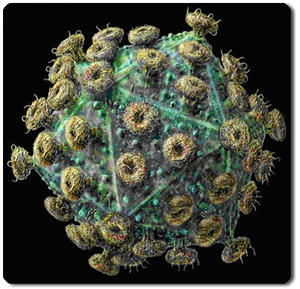Public healthNew compound breaks down HIV's outer envelope
One of the reasons HIV is so difficult to treat is that it continually evolves the proteins on its membrane to increase its resistance to immune systems; researchers at Texas A&M University and the Scripps Research Institute have now discovered a compound which breaks down the outer envelope of HIV

PD404,182 breaks down the envelope, rendering the RNS vulerable // Source: liber.lt
Researchers at Texas A&M University and the Scripps Research Institute have discovered a compound which breaks down the outer envelope of HIV.
The team, led by A&M assistant chemical engineering professor Zhilei Chen, said that the potential use for the compound is not a cure for HIV, but envisage it being used in vaginal barrier gels to prevent infection during sexual intercourse. The compound is also effective against the hepatitis C virus.
A Texas A&M release reports that the synthetic compound, known as PD 404,182, works by breaking open or dissolving HIV’s outer membrane, exposing the RNA, which is unstable and so is quickly broken down, inactivating the virus before it has a chance to infect a person’s cells. What is most exciting about this compound is that it appears to have a different mode of action to other virucides.
“We believe PD 404,182 acts through a unique and important mechanism,” said Chen. “Most of the known virucidal compounds interact with the virus membrane, but our compound does not appear to interact with the virus membrane. Instead, it bypasses interaction with the membrane and still compromises the structural integrity of the virus.”
The release notes that one of the reasons HIV is so difficult to treat is that it continually evolves the proteins on its membrane to increase its resistance to immune systems, so because PD 404,182 attacks something else, it will be much more difficult for HIV to evolve resistance. The fact that PD 404,182 does not attack the basic membrane structure also means that human cells are less likely to be affected by the compound.
Chen and her team have already proven that PD 404,182 remains active in vaginal fluid, but Chen warned that much work must still be done before the compound becomes a useable drug. The researchers will first work with chemists to improve the efficiency of the compound, and will also further investigate the exact mechanism by which PD 404,182 breaks down HIV’s membrane.
— Read more in Ana Maria Chamoun et al., “PD 404,182 is a virucidal small molecule that disrupts hepatitis C virus and human immunodeficiency virus,” Antimicrobial Agents and Chemotherapy 55, no. 12 (December 2011) (doi: 10.1128/AAC.05722-11)
